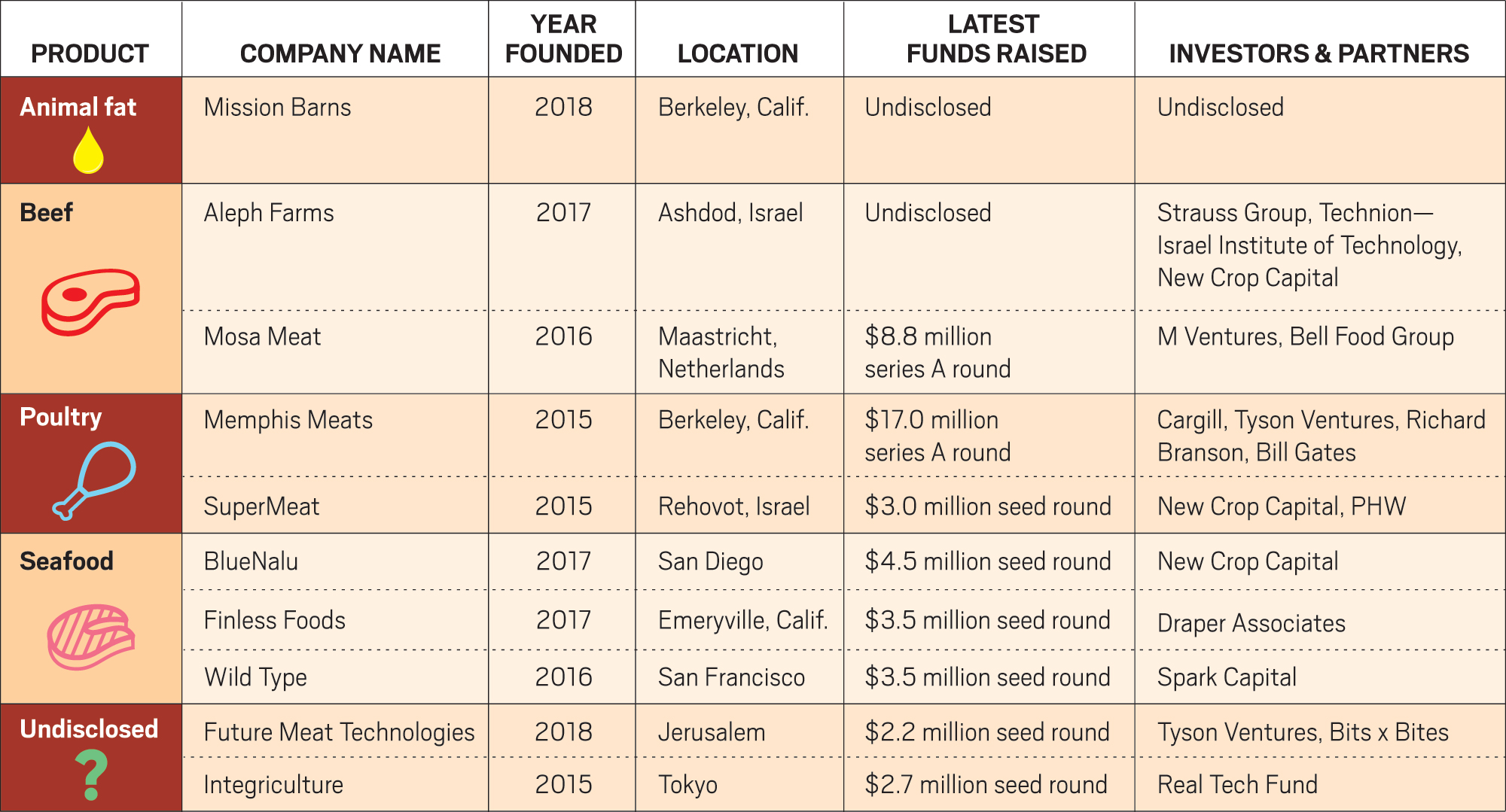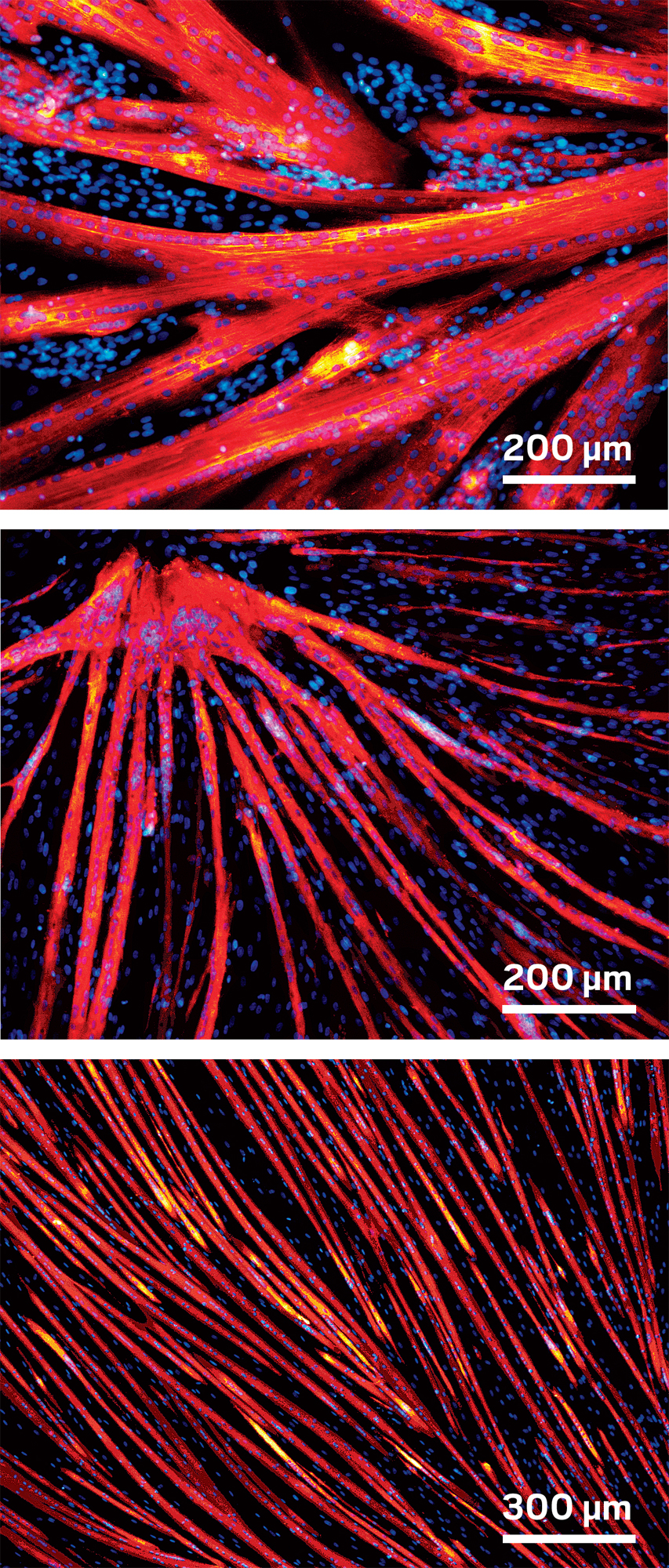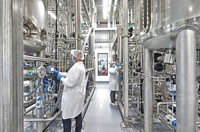Advertisement
Grab your lab coat. Let's get started
Welcome!
Welcome!
Create an account below to get 6 C&EN articles per month, receive newsletters and more - all free.
It seems this is your first time logging in online. Please enter the following information to continue.
As an ACS member you automatically get access to this site. All we need is few more details to create your reading experience.
Not you? Sign in with a different account.
Not you? Sign in with a different account.
ERROR 1
ERROR 1
ERROR 2
ERROR 2
ERROR 2
ERROR 2
ERROR 2
Password and Confirm password must match.
If you have an ACS member number, please enter it here so we can link this account to your membership. (optional)
ERROR 2
ACS values your privacy. By submitting your information, you are gaining access to C&EN and subscribing to our weekly newsletter. We use the information you provide to make your reading experience better, and we will never sell your data to third party members.
Food Ingredients
The to-do list for ‘clean’ meat
Many start-ups want to commercialize animal-free meat. Here’s what they have to do first
by Melody M. Bomgardner
October 21, 2018
| A version of this story appeared in
Volume 96, Issue 42

In brief
Lab-grown meat sounded like science fiction five years ago when Maastricht University’s Mark Post showed off his petri-dish burger for the cameras. Since then, dozens of companies have launched and are learning what will be required to commercialize cell-based meat. Delivering the first generation of products will depend on cross-disciplinary work among cell biologists, tissue engineers, biochemists, and materials engineers. To succeed in the marketplace, cell-based meat purveyors will have to solve problems of efficiency and distribution. And finding acceptance among consumers and regulators will require assurance that the new manufacturing processes are safe. Finally, cell-based meat developers will need to think like meat scientists to deliver flavor and texture that convinces lovers of animal-based meats to make the switch.
A little over five years ago, Mark Post, a professor of vascular physiology at Maastricht University, garnered worldwide headlines for his research project. It was a single hamburger, made in his laboratory. The burger was not juicy—it was made with only muscle cells and thus no fat—and was definitely not a bargain. The two-year effort cost $325,000. The cells, derived from a cow’s shoulder, were nurtured in cell culture media and harvested from stacks of petri dishes.
The New York Times dubbed the debut “an odd demonstration of one view of the future of food.” While consumers’ reactions to the news were decidedly mixed, what stood out were the potential animal-welfare and environmental benefits of producing meat without raising and slaughtering animals.
In the years since, the media’s fascination with lab-grown meat has waned. But behind the scenes, that first burger kicked off an entirely new industry. A cadre of entrepreneurs, scientists, investors, and research nonprofits is working to address the technical and social barriers to mass production of meat grown from animal cells.
In 2015, a cardiologist joined a stem cell biologist and a tissue engineer to found the poultry-focused start-up Memphis Meats. About two dozen additional companies have followed, and many have raised money from outside investors. They seek to move animal-free meat production out of the petri dish and into the food factory.
But to do that, they must complete a number of challenging tasks. They need product names and labels that satisfy consumers and regulators. They need new techniques, inputs, and equipment that can safely grow massive numbers of cells from cows, chickens, and fish. And to compete with traditional meat, as well as plant-based alternatives, they need to make products that are easy on the wallet and the palate.

Decide what to call it
Start-ups and activists promoting the nascent industry haven’t even settled on the most basic of points: how to talk about the new meat.
In the U.S., the legal definition of meat requires that it come from a slaughtered animal. So the industry has been casting about for a meatlike name for its products. Possible terms include cultured meat, in vitro meat, clean meat, and cell-based meat.
The industry is strongly against using the words “synthetic” or “artificial.” Scientists working at the start-ups want to affirm that what they’re making is actual meat. A growing number of biochemists and geneticists are working on synthetic life forms, but the companies stress they are not in the synthetic biology business.
While it may seem like a mere marketing detail, a lot hinges on a name. Studies have shown that consumer acceptance of the new meat could depend on what it is called.
The industry was reminded of the importance of labeling and language in July, when Scott Gottlieb, head of the U.S. Food & Drug Administration, said the agency would change its policies for marketing plant-based milks, such as those made from almonds and soy. Dairy groups say they don’t want nondairy products to be labeled as milk.
Similarly, the U.S. Cattlemen’s Association has petitioned the U.S. Department of Agriculture to restrict use of the words “beef” and “meat” to products “born, raised, and harvested in the traditional manner.”

The Good Food Institute—a nonprofit advocating for meat alternatives—and a number of start-up companies are using the term “clean meat.” GFI Executive Director Bruce Friedrich says the phrase is a nod to clean energy and describes meat that is better for the environment. But others argue the term throws shade on traditional meat, implying that it is not clean.
Memphis Meats has long called its products cell-based meat “because it is neutral, inclusive, and factual,” says Eric Schulze, the firm’s head of product and regulation. That choice may gain in popularity if organizations representing traditional meat producers and companies embrace it. “We think it’s a term that everybody can sign on to,” Schulze says.
Matt Ball, GFI’s head of communications, acknowledges that the language is in flux and that regulators and consumers have yet to weigh in. “We wouldn’t speculate on what regulators might do,” Ball says. “It is entirely possible that the public will use an umbrella term that differs from what is on different packages from different companies.”
Appetizer Round
Start-ups pursuing cell-based meat have raised early-stage financing from diverse investors.

PRODUCT: ANIMAL FAT
Company name: Mission Barns
Year founded: 2018
Location: Berkeley, Calif.
Latest funds raised: Undisclosed
Investors & partners: Undisclosed
PRODUCT: BEEF
Company name: Aleph Farms
Year founded: 2017
Location: Ashdod, Israel
Latest funds raised: Undisclosed
Investors & partners: Strauss Group, Technion—Israel Institute of Technology, New Crop Capital
Company name: Mosa Meat
Year founded: 2016
Location: Maastricht, Netherlands
Latest funds raised: $8.8 million series A round
Investors & partners: M Ventures, Bell Food Group
PRODUCT: POULTRY
Company name: Memphis Meats
Year founded: 2015
Location: Berkeley, Calif.
Latest funds raised: $17.0 million series A round
Investors & partners: Cargill, Tyson Ventures, Richard Branson, Bill Gates
Company name: SuperMeat
Year founded: 2015
Location: Rehovot, Israel
Latest funds raised: $3.0 million seed round
Investors & partners: New Crop Capital, PHW
PRODUCT: SEAFOOD
Company name: BlueNalu
Year founded: 2017
Location: San Diego
Latest funds raised: $4.5 million seed round
Investors & partners: New Crop Capital
Company name: Finless Foods
Year founded: 2017
Location: Emeryville, Calif.
Latest funds raised: $3.5 million seed round
Investors & partners: Draper Associates
Company name: Wild Type
Year founded: 2016
Location: San Francisco
Latest funds raised: $3.5 million seed round
Investors & partners: Spark Capital
PRODUCT: UNDISCLOSED
Company name: Future Meat Technologies
Year founded: 2018
Location: Jerusalem
Latest funds raised: $2.2 million seed round
Investors & partners: Tyson Ventures, Bits x Bites
Company name: Integriculture
Year founded: 2015
Location: Tokyo
Latest funds raised: $2.7 million seed round
Investors & partners: Real Tech Fund
Scale up production
Any start-up planning to commercialize cell-based meat has to solve two major problems right out of the gate: how to feed the cells and how to grow them in large quantities.
To make his singular burger, Post used most of the surface area of his lab, stacking flat, square cell culture trays in towers. That type of production environment would not provide enough cell-based meat for even a corner bistro.
At GFI’s Good Food Conference in September, Post emphasized that his project was just a proof of concept. The early experiments adapted standard biomedical lab practices to grow cells. “Cell culture is not a really efficient process,” Post said. “A lot of our colleagues still think we are absolutely crazy because they say you can’t make this efficient at all.”
To make large quantities of clean meat, scientists first have to figure out what to feed the cells. While cows graze on pasture and munch cheap grain, cultured cells are pampered with cell culture growth medium—an expensive concoction of sugars, salts, pH buffers, amino acids, micronutrients, and growth factor proteins.
The clean meat industry is taking a hard look at growth-medium recipes because 80% of the cost of an end product is likely to be due to this feedstock.
Of the ingredients, growth factor proteins are the most difficult and costly to obtain. These cell signaling proteins, such as fibroblast growth factor, are essential for cell proliferation and differentiation. Most cell culture media contain a serum of growth factors from the blood of fetal cows obtained from pregnant cattle at the slaughterhouse. Clearly, fetal bovine serum is not appropriate for animal-free meat production.


Another difficulty, says Torin Yeager, tissue engineer at the start-up Finless Foods, is that growth factor proteins aren’t readily available to scientists or companies that want to mix up barrels of medium rather than liters of it. Obtaining them is “an interesting design challenge,” agrees Jess Krieger, a researcher at Kent State University who studies meat-tissue engineering. One way would be to use recombinant methods, just as drug companies do to make biologic drugs from mammalian cells.
Further complicating things is the lack of a universal growth medium for all meat. Finless Foods is working on a medium to feed the fish cells that will make up its bluefin tuna products. Cells from different species, and even different cell types within the same species, have different nutrient needs and require diverse signaling molecules to thrive, Yeager says. While some medium components are required for all species of animal cells, as much as half the recipe can differ, he says. “You can’t draw large generalizations across species or cell types.”
Post suggests that the industry reconsider the very basics of cell culture medium. “It was developed for a different purpose. In biopharmaceutical science, no one looks at price, source, or scalability,” he said at GFI’s conference. “The approach we’re taking is to remove all the dogmas and start all over again. What is the simplest way to do this?”
Instead of treating cells in the bioreactor like fragile patients and feeding them Ensure-like meal replacements, scientists may be able to train them like athletes and feed them Gatorade. At least one project did try Gatorade, Post said, but the mainly sugar energy drink proved too acidic. “Still, we need to think in terms of these approaches,” he said.
Kent State’s Krieger is hoping that biochemists, chemical engineers, and analytical chemists will lend their skills in high-throughput screening, bioinformatics, and metabolic mapping to investigate what combination of ingredients works best in a production, rather than research, environment.
Companies must also choose a cell line, which will initially come from an animal biopsy. They’ll want cells that multiply quickly and perform predictably, GFI Senior Scientist Liz Specht says. The cells might be pluripotent, having the potential to form any cell, including nerve, bone, and muscle; multipotent to allow for a few final cell types; or specialized, as in adult muscle cells.
The design of a meat-cell bioreactor is another big question the industry has to tackle, Specht says. The production environment will likely look like a fermentation vessel rather than a mass of petri dishes.
But while yeast or bacteria float freely and multiply in large bioreactors, animal cells prefer to grow on a surface—and they’re particular about the material they’ll stick to. So growing meat could call for a two-phase bioreactor with different support systems, Specht says.
In the first phase, cells could grow on microcarriers such as polymer beads, Specht notes. The goal would be to start with a small number of cells and get them to multiply exponentially.
In the second phase, a three-dimensional scaffold, possibly made of an edible or degradable material, would trigger cells to stack up and possibly differentiate into muscle, fat, and connective tissue. The 3-D scaffold would be porous to allow the nutrient media to flow through and reach the layers of cells.
“You take the cell biomass and convert that into the desired final cell types and arrangement you are looking for,” Specht says. That section of the process may differ depending on whether a company is aiming for, say, ground beef or steak.
Or, in the case of Finless Foods, a flaky fish texture. “We want to make a structured product either with a postprocessing step or by growing those tissues onto a scaffolding material to give us that structure,” Yeager says. “We’ve been working with food scientists on what the finished product needs to look like, but they’ve not had to solve this problem of growing living cells.”
Make it sustainable and affordable
With a little more work on the technology that some start-ups have in hand, cell-based meat could be available to the public as early as next year. But to try it, customers would likely have to dine at an upscale restaurant in Manhattan or Singapore—depending on regulatory reviews—and pay a thousand dollars per plate.
That limited audience would not move the needle on the sustainability of the meat industry. According to the Cellular Agriculture Society, an advocacy group, cell-based meat has the potential to use 98% less water and emit 96% fewer greenhouse gases compared with traditional meat. It would not require antibiotics and would take up much less land.
To be successful, the industry will have to turn out products cheap enough to leave room for others in the supply chain to profit, including feedstock producers, equipment manufacturers, food brands, distribution companies, and retailers.
Some in the industry say cost-effective production will require systems that capture, clean, and recycle the used cell culture media, much like mammals’ kidneys and liver filter cellular waste and add nutrients to blood. It may not be a coincidence that Finless brought on Yeager, who as a bioengineering graduate student developed membranes for artificial kidneys. For now, he’s working on ways to infuse nutrients and oxygen into tissues grown from cells.
Compared with moving medium into cells, recapturing it afterward is more difficult, Yeager warns. “Recycling the liquid media could get really expensive really fast. Will it be like dialysis? It’s not super trivial to filter out cellular waste products, and it could be very difficult to scale when doing thousands of liters at a time,” he says. “I’d file that under unsolved problems.”
These and other explorations in applied biochemistry and engineering require time and money. In 2016, Post founded Mosa Meat with Peter Verstrate, a veteran of the traditional meat industry. In July, Mosa Meat raised $8.8 million in its first round of funding, led by the venture arm of Germany’s Merck, a large maker of cell culture media, and Bell Food Group, a Swiss meat processor.
Cell-based meat start-ups have also attracted funding from the poultry firms PHW and Tyson Foods, the technology pioneers Sergey Brin and Bill Gates, and traditional venture capital firms such as Draper Associates and Spark Capital.
New Crop Capital is a seed-stage funder in 30 plant- and cell-based meat companies. Chris Kerr, New Crop’s chief investment officer, says he stopped eating meat, dairy, and seafood 16 years ago but considers himself a foodie. He has been investing in the space since 2007.
“We’re not going to change the food system in 10 years—that’s not how our food system works,” Kerr says. Because New Crop operates like a trust, it makes investments for the long term. And big players in agriculture and food are starting to think the same way, he says. “We really want to work with strategic corporate investors that are able to think a generation ahead.”
For consumers looking to shift away from a meat diet, plant-based alternatives are available now. But “a sizable swath of consumers just won’t migrate to plant-based meat,” Kerr contends. Of those who stick with meat, not many have to choose cell-based meat for the industry to succeed, he suggests. Together, meat, poultry, and seafood are a $1 trillion-per-year industry, so even the chance to capture 5% of the market is a “massive opportunity.”
Meanwhile, GFI and the research nonprofit New Harvest are awarding grants to scientists in academia and at start-ups to solve some of the core challenges of cell-based production.
“New Harvest funds the research pipeline,” Research Director Kate Krueger explains. “We are hoping to provide open-source research on innovations to lower cost, improve scalability, and improve overall features of the industry.” For example, New Harvest supports research on media that would work for a wide variety of cells. Companies could tweak the recipe for their specific needs.
So far, little public research money has been funneled to cell-based meat development in the U.S., though support for related human health research such as tissue engineering can help the industry.
GFI is working to open public funding channels further. “We have had some success in getting language into appropriations bills for R&D money that has been already earmarked,” Specht says.
“There’s a really strong argument to be made for funding across multiple grant-giving agencies that have a stake in food security and global stability,” she adds. “By no means is it too late for public funding to make an enormous difference.”
Make it safe
Before consumers will adopt cell-based meat, they’ll need to be assured that it is safe.
“The first of their concerns will be, ‘Will it kill me?’ ” New Crop’s Kerr says. He contends that clean meat will be much safer than meat from the slaughterhouse; indeed, he says concerns about food safety will help drive demand for meat produced under sterile conditions.
But cell-based meat facilities will confront the same safety risks as other bioindustrial plants.
“The vats in which the lab meat is cultured can become contaminated with disease-causing bacteria, viruses, fungi, and mycoplasma,” said Michael Hansen, senior scientist at the consumer advocacy group Consumers Union, speaking in July at a public meeting held by FDA.
For now, there are no food safety regulations or guidelines specific to cell-based meat, but as a food substance it will be regulated in both the U.S. and other countries.
The prospect of FDA alone overseeing the safety of cell-based meat in the U.S. worries Hansen because many of the agency’s safety guidelines are voluntary. One example is the process for obtaining generally recognized as safe (GRAS) notification for food additives, which is overseen entirely by food companies.
The safety purview of USDA isn’t a great fit for cell-based meat, either, industry players say. Its major role is to oversee animal health and inspect slaughterhouses and meat-packing plants.
In a joint letter to the White House, Memphis Meats and the North American Meat Institute, a meat company trade group, asked for clarity on regulations for cell-based meat. The groups suggested FDA have premarket oversight, with input from USDA. USDA would then provide safety and labeling regulations for the marketplace.
Another question consumers will have is whether a diet that includes cell-based meat is healthy. For the most part, industry experts say it will be as healthy—or unhealthy—as traditional meat, poultry, and fish. It is possible, they point out, that producers of cell-based beef could tweak the balance of fatty acids to reduce the potential for cardiovascular disease.
Make it delicious
In a product-development race that may take a decade or more, it is hard to say whether plant- or cell-based meat will be the first to steal a major market share from traditional meat. Certainly, versions of both will be increasingly available on grocery shelves.
Consumer research has shown that higher-income consumers are willing to try the new products and pay more for convincing alternatives to meat. New plant-based meat alternatives such as the heme-enriched Impossible Burger by Impossible Foods and meat-texture-mimicking Beyond Meat have raised the bar.
But GFI’s Specht makes a case for cell-based meat having a taste advantage. “This is meat, so of course it will taste like meat,” she says. While makers of plant-based substitutes rely on a few added flavors to mimic meat, meat cells come with a wide range of meat-flavor molecules already inside, she points out.
Specht spends a lot of time with meat scientists. “They have a nuanced understanding of the complexity of flavors of different grades of meat and the indicators of quality and freshness,” she says. “They know why an alfalfa-raised cow tastes different than a clover-pastured cow.”
What is exciting about this endeavor is you have the opportunity to set all those parameters exactly how you want,” Specht says. “You can make the highest quality of meat in endless quantities all the time.”
Advertisement
Still, it doesn’t take a meat scientist to know that a rib-eye steak—with its arrangement of muscle tissue, fat, and connective tissue—is more complicated than the bunch of muscle cells that made up Post’s petri-dish burger.
Mimicking a steak’s taste and texture will require a more advanced production platform than what’s required to make a cell-based meatball. Cooking up that capability is the goal at Aleph Farms, an Israeli start-up that is partnered with Technion—Israel Institute of Technology.
Neta Lavon, Aleph’s head of R&D, won’t reveal much about how the company plans to tackle the rib-eye challenge, but she says she’s confident in her team’s skills. “We’ll be able to build a real tissue,” Lavon says. “The approach we are taking is we have a large team of scientists coming from cell biology, stem cell biology, tissue engineering, materials engineering—all of them together are making this vision come true.”
Getting it all together, though, is no simple task. The clean rib eye—indeed, all clean meat endeavors—will take time.
“You have to have some patience,” Kerr says. Cell-based meat “will enter the market slowly, but once it does, it will be disruptive; there is no question about that. I don’t need to be a believer in it being 18 months from now. We’ve got time to get it right.”





Join the conversation
Contact the reporter
Submit a Letter to the Editor for publication
Engage with us on Twitter